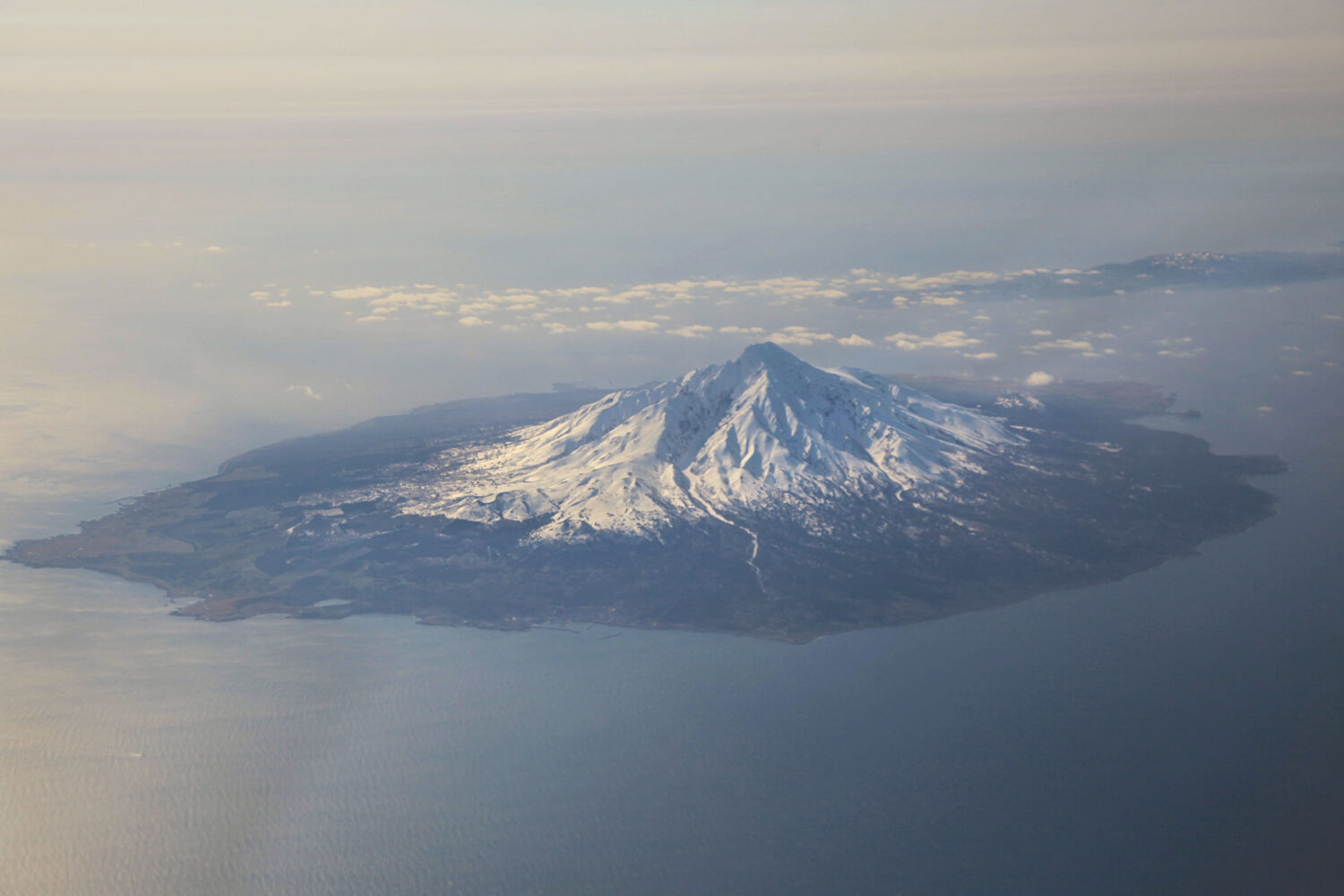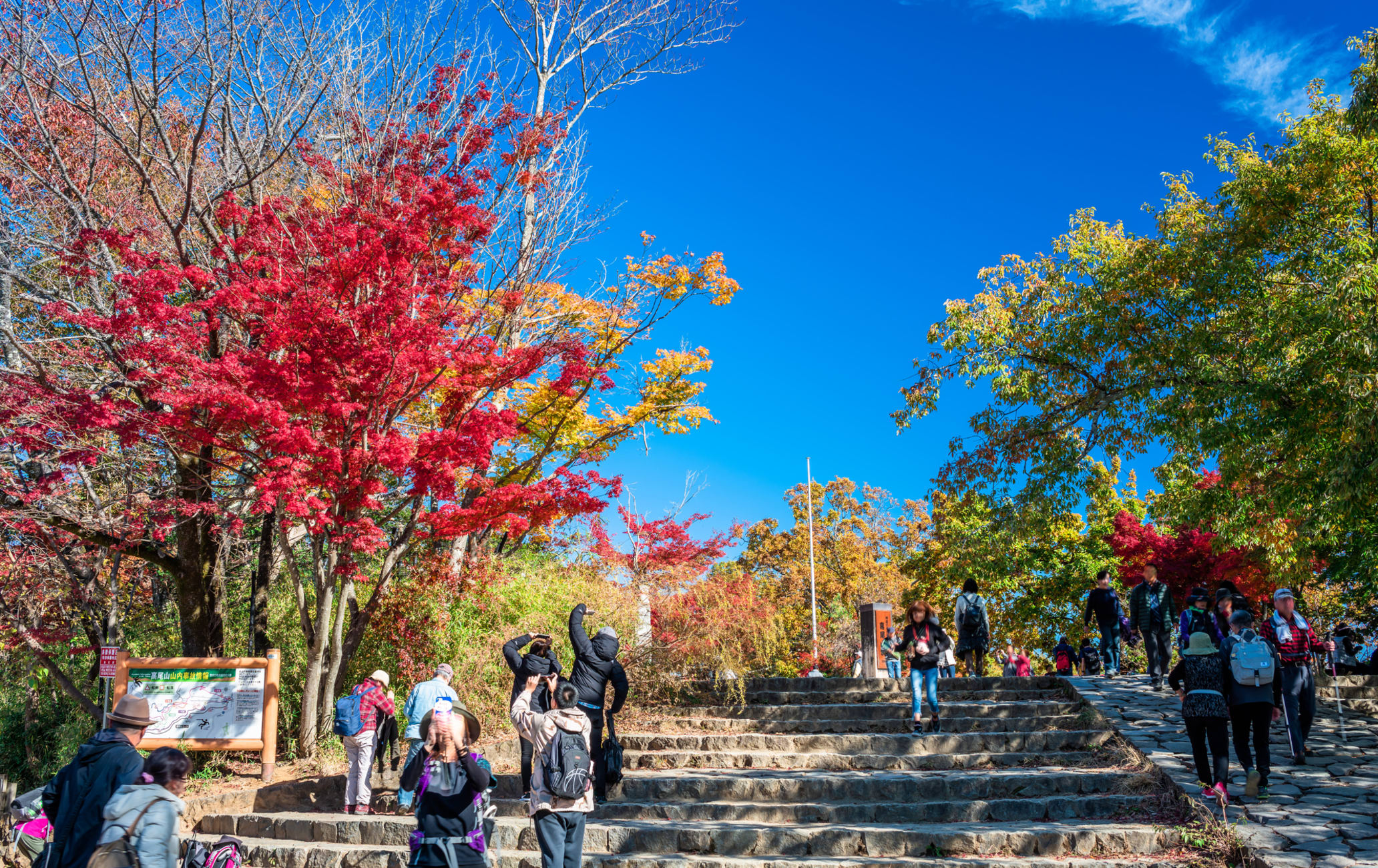Table of Contents
ToggleJapan is renowned for its bustling cities, rich history, and cultural traditions, but it’s also a paradise for hikers, offering stunning mountain trails, forests, volcanic landscapes, and coastal walks. From the iconic Mount Fuji to hidden paths through ancient forests, Japan’s hiking trails vary in difficulty and offer something for everyone. Whether you are a seasoned trekker or a casual walker, exploring Japan on foot is an unforgettable way to experience the country’s natural beauty. Whenever you think about hiking in Asia Japan should be in your list. Here is an overview of the 7 best hikes in Japan.
7 Best Trails For Hikes in Japan
1. Mount Fuji
- Length: 12 km (average ascent)
- Difficulty: Difficult
- Best Time to Hike: July to early September

Mount Fuji is Japan’s most iconic mountain, and climbing to its summit is a bucket-list experience for many hikers. The official hiking season is short, running from early July to early September when the snow has melted and the trails are open. There are four main routes to the top, with the Yoshida Trail being the most popular. The ascent typically takes 5-8 hours, and many hikers choose to begin the climb in the evening to reach the summit by sunrise. Although the hike is challenging due to the altitude and steepness, the view from the summit and the sense of accomplishment make it worth the effort.
2. Kumano Kodo, Wakayama
- Length: Varies (38 km for the Nakahechi Route)
- Difficulty: Moderate
- Best Time to Hike: March to November

The Kumano Kodo is a network of ancient pilgrimage trails in the Kii Mountain Range, leading to the sacred Kumano Sanzan shrines. The Nakahechi Route is the most popular, taking hikers through dense forests, mountain villages, and historic sites over several days. The trail is well-maintained, with accommodations available at traditional ryokan inns and temple lodgings along the way. In addition to its natural beauty, the Kumano Kodo offers a spiritual experience, as the route has been walked by pilgrims for over 1,000 years. It’s one of only two UNESCO World Heritage pilgrimage routes in the world, the other being the Camino de Santiago in Spain.
3. Mount Takao, Tokyo
- Length: 6 km (for the most popular route)
- Difficulty: Easy to Moderate
- Best Time to Hike: March to November
Located just an hour from central Tokyo, Mount Takao offers a perfect escape from the city. The mountain has several well-marked trails, with the most popular route (Trail 1) leading to the summit in about 90 minutes. The trail passes through lush forests, alongside shrines, and offers beautiful views of the Tokyo skyline and Mount Fuji on clear days. Mount Takao is a favorite for locals and tourists alike, with the added attraction of hot springs at the base of the mountain where you can relax after the hike. During the autumn months, the vibrant fall foliage adds to the mountain’s appeal.
4. Mount Kita, Southern Alps
- Length: 14 km (2-day hike)
- Difficulty: Difficult
- Best Time to Hike: June to October
Mount Kita is Japan’s second-highest peak, located in the Southern Alps, and offers one of the best mountain hiking experiences in the country. The hike to the summit is challenging, usually done over two days, with a stay at a mountain hut near the top. The trail takes you through pristine forests, alpine meadows, and rocky terrain, with breathtaking views of Mount Fuji from the summit. Mount Kita is less crowded than Mount Fuji, making it a great option for experienced hikers seeking solitude and stunning scenery. The ascent involves steep sections, but the panoramic views from the top make it worth the effort.
5. Nakasendo Trail, Kiso Valley
- Length: Varies (8 km for the Magome to Tsumago section)
- Difficulty: Easy
- Best Time to Hike: March to November

The Nakasendo Trail is an ancient trade route that connected Kyoto to Edo (modern-day Tokyo) during the Edo period. One of the most scenic and accessible sections of the trail is between the historic post towns of Magome and Tsumago in the Kiso Valley. This well-preserved route takes you through traditional villages, cedar forests, and along cobblestone paths. The trail is relatively easy, making it perfect for a half-day hike. Along the way, you’ll have opportunities to experience traditional Japanese culture, with local inns and tea houses offering a glimpse into the past. The trail is especially beautiful in autumn when the surrounding forests turn vibrant shades of red and gold.
6. Shiretoko Five Lakes, Hokkaido
- Length: 3 km (for the loop trail)
- Difficulty: Easy
- Best Time to Hike: May to October

Shiretoko National Park, located on the remote Shiretoko Peninsula in Hokkaido, is one of Japan’s most pristine and untouched wilderness areas. The Shiretoko Five Lakes hike is a relatively easy walk through dense forests and alongside five tranquil lakes, with stunning views of the Shiretoko mountain range in the background. The area is home to diverse wildlife, including brown bears, deer, and foxes, making it an exciting destination for nature lovers. To protect the environment, visitors may need to be accompanied by a guide during the bear season. The hike is short but offers an intimate experience with Japan’s northern wilderness, with spectacular views and serene landscapes.
7. Mount Rishiri, Rishiri Island
- Length: 15 km (full ascent)
- Difficulty: Difficult
- Best Time to Hike: June to September

Located off the northern coast of Hokkaido, Mount Rishiri is a dormant volcano that rises dramatically from the sea, forming the centerpiece of Rishiri Island. The hike to the summit is challenging and takes a full day, but the views from the top are incredible, with 360-degree vistas of the surrounding sea and the distant coast of Hokkaido. The trail passes through alpine meadows, volcanic rock formations, and dense forests, offering a unique hiking experience far from Japan’s main tourist routes. The island itself is remote and peaceful, making it an ideal destination for adventurers looking for an off-the-beaten-path experience in Japan.
Tips for Hiking in Japan
- Timing: Japan’s hiking season varies by region. Alpine hikes in the north are best done in the summer months (June to September), while lower altitude trails can be enjoyed year-round.
- Trail Etiquette: Japan’s hiking culture is respectful and mindful of nature. Always take your trash with you and avoid picking plants or disturbing wildlife.
- Mountain Huts: Many longer hikes, especially in the Alps, offer mountain huts where you can stay overnight. These huts usually provide basic meals and accommodation, but it’s important to book in advance during peak season.
- Weather: Japan’s weather can change quickly, particularly in the mountains. Make sure to check the forecast before you head out, and be prepared with waterproof gear and warm layers.
- Bear Awareness: In some areas, particularly in Hokkaido and the Japanese Alps, bears are present. Carrying a bear bell and following local guidelines is essential to staying safe.
Conclusion
From ancient pilgrimage routes to towering volcanic peaks, Japan offers a diverse range of hiking experiences that showcase its natural beauty and cultural heritage. Whether you’re scaling Mount Fuji at sunrise or walking through the cedar forests of the Kumano Kodo, hiking in Japan provides a unique and memorable way to explore this incredible country.




